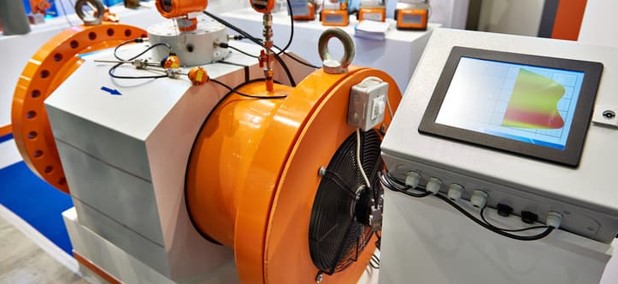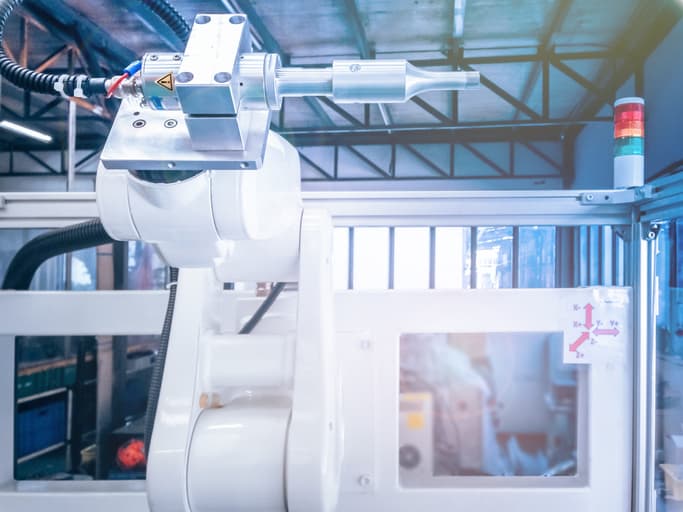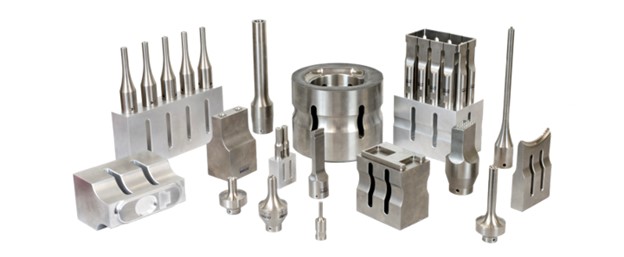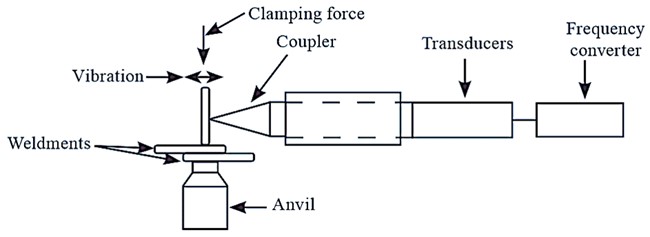The distinctive difference between welding and other joining mechanisms, such as adhesives and riveting, is the use of heat. However, there are two mechanisms of heat application, hence, two categories of welding processes. The common category comprises processes such as TIG and MIG welding that uses direct heat application. The second category where ultrasonic welding falls is less common but involves using indirect heat.
Ultrasonic welding uses ultrasonic waves to generate the heat needed to weld two parts. This article extensively discusses the welding process and its application in part manufacturing.
This is an indirect heat welding process that uses ultrasonic waves to weld thermoplastics and thin metal parts together.
The machine works by converting high-frequency electrical signals (20-40 Hz) to ultrasonic waves. Afterward, the generated mechanical vibration is amplified and delivered to heat and weld the two parts.
The welding process is unique, unlike other processes such as MIG and TIG welding, which need filler materials. Also, it is suitable for welding small and thin parts due to its precision and accuracy compared to other direct sheet metal welding processes.
Its advantages include quick setting time and clean welded joints. Consequently, it is a joining mechanism in the medical, electronics, and automotive industries.

Before the discovery of ultrasonic welding in the 20th century, the prevalent plastic welding processes were arc welding techniques. However, these welding techniques produced heavy and unwieldy parts. Therefore, the introduction of an ultrasonic vibration for welding plastics was a welcome relief for many industries.
Ultrasonic vibrations were first applicable in welding hard and compatible plastics. Here, it involved using a probe that touches the two parts to weld them together. Consequently, at that point, it became an important part of the aircraft construction industry ahead of spot welding.
The modern development and use of the welding technique would be attributed to Robert Soloff, a lab manager at Branson Instrument, who mistakenly discovered that the ultrasonic probe does not need to touch thermoplastic parts to weld them.
Soloff developed Sonics & Materials, and in 1965 was awarded the patent of the welding process together with Seymour Linsley. He later presented the idea to Ideal Toy Co., which the company accepted due to the aesthetic yet strong welded joints. Consequently, this led to a boom in plastic toy production and the acceptance of important parts of several commercial products.
Ultrasonic vibration use in the welding process underwent several modifications. Currently, it is a common technology with both consumer and industrial applications.

The machines comprise several parts with specific functions. Below are a few important parts you will find in all types of ultrasonic welding machines:

The generator converts electrical power with a resonance frequency to the required voltage and high frequency. In addition, it has a microprocessor responsible for driving the welding cycle and providing important welding communication through the user interface.

The machine press holds the welded system and applies the force that holds the welded joint together. It has a pressure gauge and regulator, allowing the operator to adjust the force exerted on the system.

The welding stack comprises the transducer, booster, and welding horn mounted on the welding machine press at the booster’s central point. It is responsible for providing ultrasonic machine vibration, and its frequency must be close to the generator’s frequency for quality welded joints.

A transducer or converter converts high-frequency electrical energy to mechanical vibration. It comprises several piezoelectric ceramic discs placed between two titanium blocks. Also, an electrode is made from a thin metal plate between the piezoelectric discs.
The booster has two functions. First, it amplifies the produced vibration by contracting and expanding and transmits them to the welding horn. Second, it acts as a base for the welding stack on the welding press.

The welding horn is responsible for transmitting the vibration to the welded part. It is made of aluminum or titanium. However, aluminum is only suitable for low-volume applications because it wears out. To reduce the wear out, most welding horn has hardened tips.
The support tooling functions in holding the machine’s lower component during welding. It is the base of the machine designed to match the contours of the workpieces.

Ultrasonic welding works based on the process of using vibrational sound waves to heat and melts a material. Below is the summary of how the process works:
The welding process has a limitation in the types and sizes of materials it is compatible with. Below are the common materials for this technique.
The ultrasonic welding process is one of the most common plastic welding techniques. It is suitable for welding thermoplastics such as polycarbonate, ABS, polyester, etc. However, it would be best if you took note of properties such as the presence of moisture and hardness. Also, the process is unsuitable for plastic polymers such as PVC and polyamide.
Ultrasonic metal welding technique is compatible with several metals such as aluminum, copper, silver, brass, nickel, gold, and their alloys. However, the technique is only suitable for these metals in thin and small dimensions.
Choosing the right material is an important part of ultrasonic welding. However, there are when choosing a suitable material for your end products.
Aside from the similarity of materials, choosing the right material depends on the presence of lubricants, fillers, pigments, etc. Thus, getting advice from welding specialists like ours can be a game changer.

The ultrasonic welding process has advantages over other sheet metal welding and non-welding processes due to its indirect heating techniques, which improve aesthetics without affecting functions. Aside from that, other advantages of the process include:
With the compatible parts, the high-frequency ultrasonic vibration can weld parts quickly. As a result, ultrasonic welding technology guarantees a fast production process, high throughput, and short turnaround times.
Due to the indirect application of heat, there is a reduction in operational hazards. Aside from that, heat generated by the process is localized and quickly dissipated. Hence, there is no damage to the welded joints and the surroundings of the materials to be welded.
Machines used for the welding process are reliable as they experience minimal breakdowns and faults. Furthermore, with automation, there is a reduction in operational and human error, operation cost, and improvement in welded joint quality.
It is a suitable process for welding different materials – an important attribute needed in plastic welding. In contrast, other plastic welding processes are unsuitable for dissimilar plastic materials because there is no molecular bond formation.
The process doesn’t require consumables, unlike other joining processes (see the difference between welding and riveting), which use connective bolts, solders, and other adhesive materials. Due to that, it is more cost-effective.
The welded joint does not have defects such as plastic flashes, deformation, or fault. As a result, the welded joint has a high quality, clean, and invisible seam.
The process also has its drawbacks that you need to consider. Below are a few:
The welding technique has a limitation in terms of material compatibility. For example, it is unsuitable for high moisture content thermoplastics and hard and strong plastic polymers, e.g., polypropylene.
The technique is unsuitable for welding parts with an intended joint larger than 150 mm. This is due to the transducer’s 100-150mm range. Also, it is not suitable for thick materials due to the energy needed to melt such materials.
Ultrasonic welding machines have a high cost. Consequently, businesses that want to use the technique must prepare for the high initial investment. Furthermore, the cost will increase with automation.
The process is only applicable for welding parts with a lap joint, i.e., joints made by overlapping the parts on a flat surface. That being so, it is not the right welding technique for joints such as a corner, butt, tee, and edge.
Ultrasonic welding is applicable in several industries for making consumer and industrial products. Below are a few applications of the welded parts.
The medical industry uses several ultrasonically welded parts such as face masks, blood and gas filters, and arterial and anesthesia filters. The welding technique is perfect for such products due to the welded joints. Furthermore, most of these products come from dissimilar materials made using medical plastics, such as ABS and polyethylene, for which the welding technique is compatible. Therefore, ultrasonic welded joints’ cost is low but has good quality making them perfect for medical products.
The automobile industry uses the welding process to join plastics and make components such as door panels, instrument panels, and steering wheels. The process is suitable due to the indirect heat, which does not affect the workpiece. Furthermore, it has low capital costs, automation, low cycle times, and flexibility.
The ultrasonic welding technique is suitable for manufacturing parts for the aerospace industry. The technique is popular here due to the accuracy, speed, quality of welded joint, and use of indirect heat.
The ultrasonic welding process is applicable in the electronic industry in joining wired connections. Accordingly, creating small and delicate circuits is easier, more accurate, and more efficient. Aside from that, it is also applicable in assembling electric motors, capacitors, and storage media due to its reliability and welded joint quality.
Ultrasonic welding is an effective technique for joining plastic and thin metals. However, the welded joints’ quality and overall production efficiency depend on the operator. At Rapid Direct, we provide professional rapid prototyping and manufacturing services that range from ultrasonic welding to other joining mechanisms.
Our facilities have machines that can deliver high-quality welded plastic and metal parts, and our inspection processes assure quality. Furthermore, getting access to our services is easy via our online quotation platform. Upload your CAD design and get an instant quotation and automated DfM report. What’s better, you can manage and track your order until delivery!
Ultrasonic welding is an effective welding process that delivers quality welding joints, ease of operation, and safety. While useful, it requires high precision, accuracy, and technical expertise. On this account, this article talks about the process and its application in part manufacturing. Are you looking for high-quality welded plastic and metal parts? Then, let RapidDirect help you make products that beam confidence and quality at a competitive price.
The maximum thickness weldable using the technique is 3.0mm. Anything above would require high energy that the welding process cannot deliver.
In vibration welding, vibration generates heat by vibrating the two parts. On the other hand, in ultrasonic welding parts heat up due to the heat generated using mechanical vibration from ultrasonic waves.